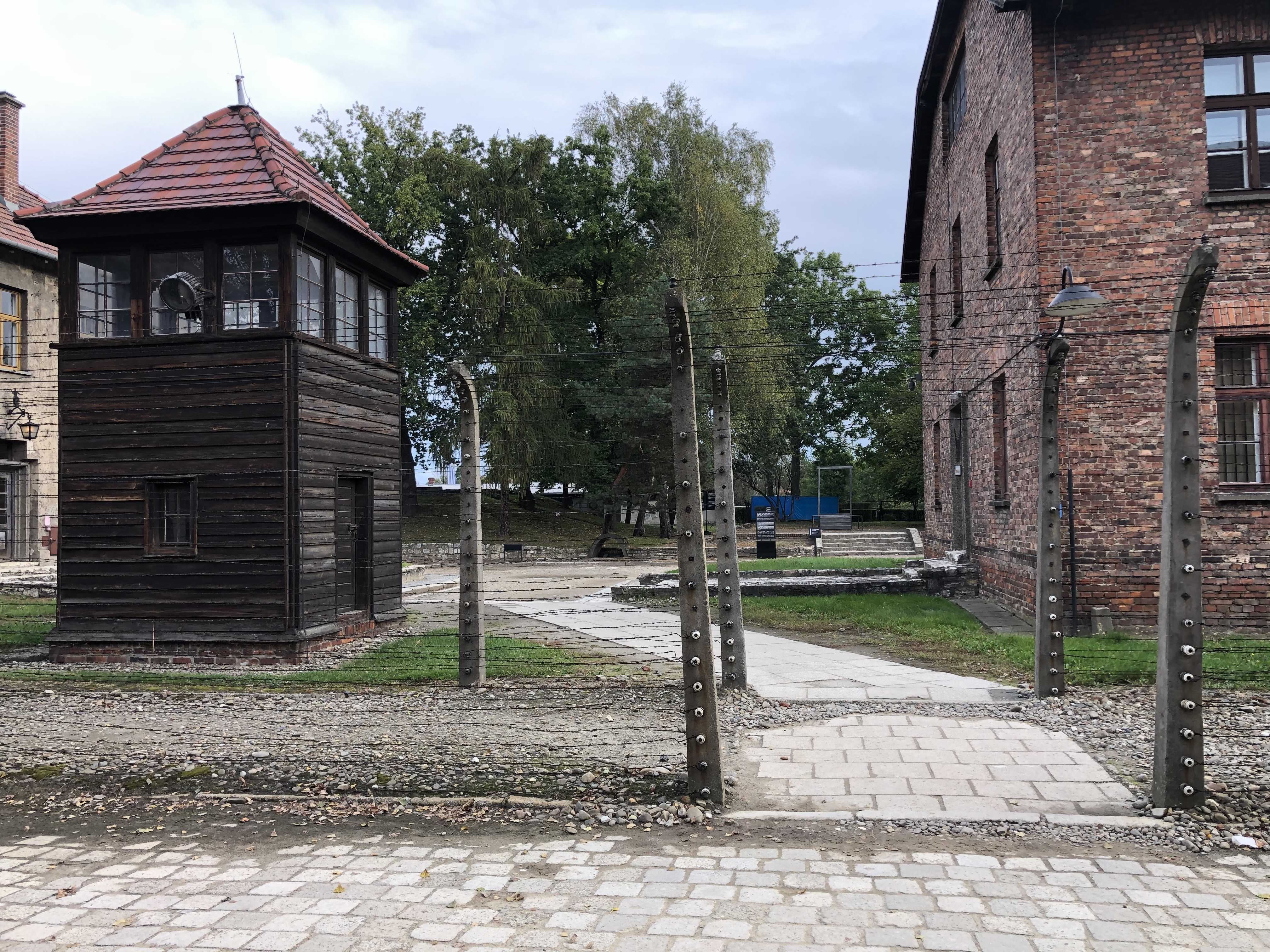Rainer Maria Rilke, Duino Elegies, trans. Edward Snow (New York: North Point Press, 2000), 51.
The gap in the fence has even earned a place in travel guides. Thus the instruction given in Rick Steves Eastern Europe, one of the best English-language guides to the region: “Before you leave Auschwitz, visit the crematorium (from Block 11, exit straight ahead and go past the first row of barracks, then turn right and go straight on the road between the two rows of barracks; pass through the gap in the fence and look for the chimney on your left).” Rick Steves Eastern Europe, 7th edition, eds. Rick Steves and Cameron Hewitt (Berkeley: Avalon Travel, 2012), 372.
Olivier Razac, Barbed Wire: A Political History, trans. Jonathan Kneight (New York: The New Press, 2002), 89.
Paul Fussell, Abroad: British Literary Traveling Between the Wars (New York and Oxford: Oxford University Press, 1980), 39.
Tom Masters et al., Europe on a Shoestring (Melbourne: Victoria, 2013), 14, 817, 825.
Fussell, Abroad, 42–3.
The program is organized by the American charity The Jewish Foundation for the Righteous (JFR). This organization supports non-Jews who risked their lives to rescue Jews during the Holocaust with pensions and medical help, and, upon their death, with a funeral and a gravestone. The JFR also runs an education program to prepare middle- and high-school teachers to teach Holocaust history.
When the Red Army liberated Auschwitz in January 1945, it was mostly empty, while Belsen was overflowing with prisoners and unburied corpses when the British Army opened its gates in April 1945. And while the British soldiers entering Belsen were accompanied by a team of professional photographers and a film team, the units of the Red Army were badly equipped to make pictures during operations.
Friedrich Nietzsche, Daybreak: Thoughts on the Prejudices of Morality, trans. Reginald John Hollingdale (Cambridge: Cambridge University Press, 1997), 352.
Jean-Paul Sartre, Being and Nothingness: An Essay on Phenomenological Ontology, trans. Hazel E. Barnes (London and New York: Routledge, 2003), 312.
Primo Levi, The Drowned and the Saved, trans. Raymond Rosenthal (New York: Simon and Schuster, 1986), 37–38.
Primo Levi, If this is a man, trans. Stuart Woolf (New York: The Orion Press, 1959), 122–123.
Ibid., 204–5.
Ibid., 206.
Primo Levi, The Truce, trans. Stuart Woolf (London: The Bodley Head, 1965), 11–12.
Primo Levi, The Periodic Table, trans. Raymond Rosenthal (New York: Schocken, 1984), 214–215.
In the end, he articulated the following insight into Müller’s personality: “Neither infamous nor a hero: after filtering off the rhetoric and the lies in good or bad faith there remained a typically gray human specimen, one of the not so few one-eyed men in the kingdom of the blind…He was not cowardly, or deaf, or a cynic, he had not conformed, he was trying to settle his accounts with the past and they didn’t tally: he tried to make them tally, perhaps by cheating a little bit. Could one ask much more from an ex-SA?” Ibid., 221–222.
Ibid., 223.
Hannah Arendt, “Isak Dinesen 1885–1963,” in Men in Dark Times (New York: Harcourt, Brace & World, 1968), 105.
See Martin Heidegger, “Language in the Poem,” in On the Way to Language, trans. Peter D. Herz (New York: Harper & Row, 1971), 159.
